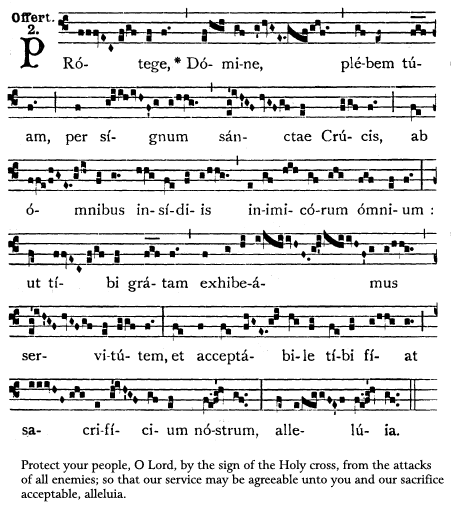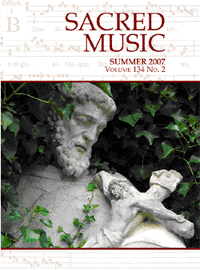Here is the Offertory for tomorrow’s Mass, the Triumph of the Cross, in both the ordinary and extraordinary form of the Roman Rite. Commentary by Dom Johner follows:

Johner writes:
The sentiment of the Offertory is similar to that of the Communion, but places greater stress upon the protection from the enemies of the soul. These enemies must not hinder us from the service of God, must not disturb our interior peace, must not rob us of the joy in God’s service, must not delude us with the enticements and seeming joys of the world, must not induce us to desert our recognized duty and become unfaithful. Against all these dangers may the holy cross protect us and strengthen us in perseverance and fidelity in the service of God.
If in this manner our service becomes pleasing to the Lord, then our worship and the union of our sacrifice with the Eucharistic Sacrifice will also become pleasing to Him.
Something akin to melancholy pervades the melody. It has a very modest development. Despite its length, its greatest interval is a third.
The first and second phrases begin with the same descending motive. Abstracting from this, the first half of the first phrase confines itself to the range of a fourth, the second half to a fifth, as does also the third phrase. The second phrase alone has a range of a sixth. Over exhibeamus servitutem the melody of per signum sanctae Crucis is extended and developed, while that of sacrificium is simplified. Only the first syllable of this word receives any special accent. Omnibus insidiis resembles acceptabile fiat. An enlivening effect is produced by the pressus, particularly over signum Crucis and the corresponding passages.
The whole should be rendered as a fervent prayer, without strong accents. It should breathe the conviction of a soul conscious of its own weakness in the face of the evil one, but firmly reliant on the power of Christ’s cross. In sentiment it is closely allied to the Offertory Domine Jesu Christe of the Mass for the Dead, which likewise belongs to the second mode.


